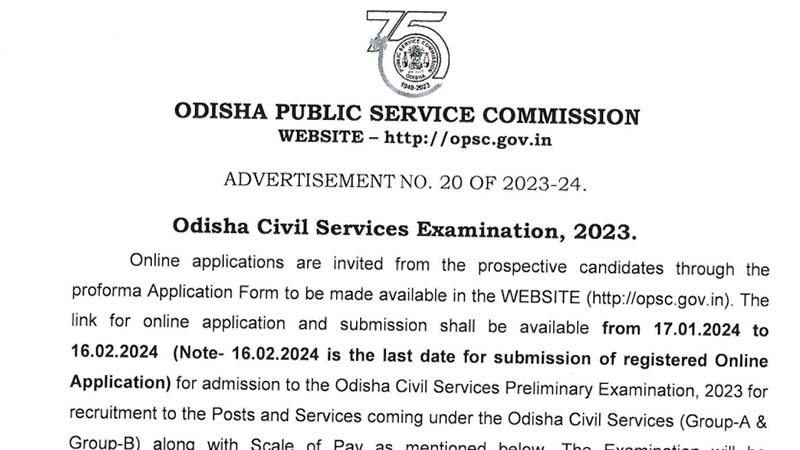PAPER-I
Section-A
1. Microbiology and Plant Pathology: Structure and reproduction of viruses and bacteria; Plasmids and their significance; Gene transfer in bacteria (Transformation, Transduction, Conjugation); Applications of microbes in agriculture, industry, medicine and pollution control; General account of infection, Phytoimmunology. Important plant diseases caused by viruses, bacteria, mycoplasma and fungi, Mode of infection and dissemination. Molecular basis of infection and disease resistance/defence; Physiology of parasitism; Fungal toxins.
2. Cryptogams and Gymnosperms : Study of structure and reproduction of Algae, Fungi, Bryophytes, Pteridophytes and Gymnosperms from evolutionary viewpoint, their distribution in India and their economic potential.
3. Angiosperms : Comparative account of various systems of Angiosperm Classiification; Study of angiospermic families–Magnoliaceae, Ranunculaceae, Brassicaceae (Cruciferae), Rosaceae, Leguminosae, Euphorbiaceae, Malvaceae, Dipterocarpaceae, Apiaceae (Umbelliferae), Asclepiadaceae, Verbenaceae, Solana-ceae, Rubiaceae, Cucurbitaceae, Asteraceae (Composite), Poaceae (Gramineae), Arecaceae (Palmae), Liliaceae, Musaceae, Orchidaceae.
Section-B
4. Anatomy, Embryology and Biostatistics : Anatomy – Structure and function of primary and secondary tissues, Mechanical tissue system, Conducting tissue system, Vascular tissue system, Stomata and their types; Anomalous secondary growth; Anatomy of C 3 and C 4 plants.
Embryology – Development of male and female gametophytes; Pollination; Fertilization; Endosperm and its function; Embryo and patterns of embryo development; Polymbryony and apomixes; Applications of palynology. Biostatistic-Central tendency, Dispersion, Estimation and hypothesis testing, Significance of standard error, Probability distributions (normal, binomial, poisson), t-test, F-test, Chisquare test, Correlation and regression.
5. Plant Utility and Exploitation: Origin of cultivated plants, Vavilov’s centres of origin. Plants as sources for food, fodder, fibres, spices, beverages, drugs, narcotics, insecticides, timber, gums, resins and dyes, latex, cellulose starch and their products; Perfumery; Importance of Ethnobotany in Indian context; Energy plantation; Botanical Gardens and Herbaria.
6. Plant Tissue Culture : Totipotency, requirements for plant tissue culture, cell, tissue, organ culture, polarity, symmetry and differentiation, Cell, tissue and organ culture; Protoplast isolation and culture; Somatic hybrids and Cybrids.
PAPER-II
Section-A
1. Cell Biology: Techniques of Cell Biology, Prokaryotic and eukaryotic cells -Structural and ultrastructural details, Structure and function of extracellular matrix or ECM (cell wall) and membranes-cell adhesion, Membrane transport and vesicular transport; Structure and function of cell organelles (chloroplasts, mitochondria, ER, ribosomes, endosomes, lysosomes, peroxisomes, hydrogenosome), Nucleus, Nucleolus, Nuclear pore complex. Chromatin and Nucleosome; Cell signalling and cell receptors; Signal transduction (G-1 proteins, etc.); Mitosis and Meiosis; Molecular basis of cell cycle; Numerical and structural variations in chromosomes and their significance; Study of polytene, lampbrush and B-chromosomes–structure, behaviour and significance.
2. Genetics, Molecular Biology and Evolution: Development of genetics; Gene versus allele concepts (Pseudoalleles), Quantitative genetics and multiple factors, Linkage and crossing over–methods of gene mapping including molecular maps (idea of mapping function), Sex chromosomes and sex-linked inheritance, Sex determination and Molecular basis of sex differentiation. Mutation (biochemical and molecular basis), Cytoplasmic inheritance and cytoplasmic genes (including genetics of male sterility), Prions and prion hypothesis; Structure and synthesis of nucleic acids and proteins; Genetic code and regulation of gene expression. Multigene families, Organic volutionevidences, mechanism and theories; Role of RNA in origin and evolution.
3. Plant Breeding and Plant Biotechnology: Methods of plant breeding – introduction, selection and hybridization (pedigree, backcross, mass selection, bulk method), Male sterility and heterosis breeding, Use of apomixis in plant breeding; Use of molecular markers in plant breeding.
Direct gene transfer methods – Particle gun bombardment, Electroporation, Chemical methods, Agrobacterium – mediated gene transfer, Biology of “Crown gall” and “Hairy root” diseases, Ti and Ri plasmids, T-DNA organization and transfer, Screening of transgenic plants, Role of selectable markers and reporter genes, Application of plant transformation for crop improvement – Development of insect-, herbicide-, virus-, fungus- resistant transgenic plants.
Section-B
4. Plant Physiology and Biochemistry : Water relations, Mineral nutrition and ion transport, mineral deficiencies. Photosynthesis–photochemical reactions, photophosphorylation and carbon pathways C3, C4 and CAM pathways; hotorespiration; Respiraion-anaerobic and aerobic, including fermentation; Electron transport chain and oxidative phosphorylation; Chemiosmotic theory and ATP synthesis; Nitrogen fixation and nitrogen metabolism; Enzymes, coenzymes, energy transfer and energy conservation; Importance of secondary metabolites.
5. Growth, Development and Stress Physiology : Photomorphogenesis, Pigments as photoreceptors (plastidial pigments and phytochrome); Photoperiodism and flowering, vernalization, senescence; Growth substances-their chemical nature, role and applications in agri-horticulture; Kinetic of growth, growth movements; Dormancy, storage and germination of seed; Fruit ripening – its molecular basis and manipulation; Fruit and seed physiology; Stress physiology (heat, water, salinity, metal).
6. Plant Ecology and Plant Geography: Ecological factors; Concepts and dynamics of community; Plant succession; Concepts of biosphere; Ecosystems and their onservation; Pollution and its control (including phytoremediaion).
Forest types of India — afforestation, deforestation and social forestry; Endangered plants, endemism and Red Data Books; Biodiversity; Convention of Biological Diversity, Sovereign Rights and Intellectual Property Rights; Biogeochemical cycles; Global warming; Forests of Odisha.
